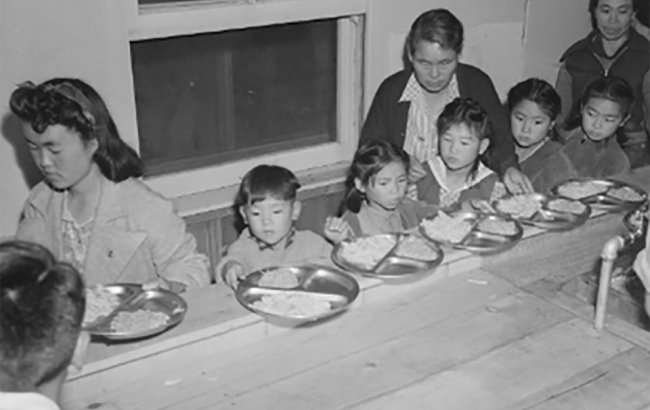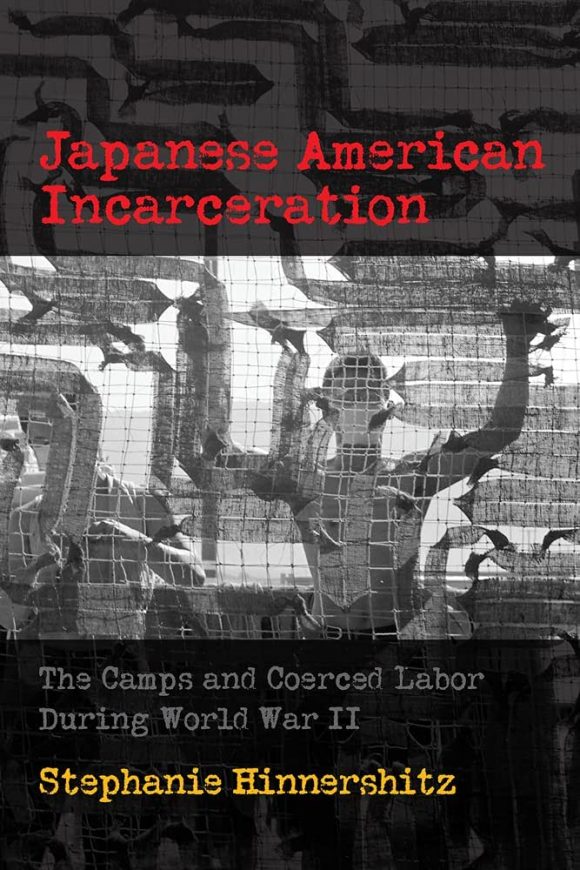
Japanese American Incarceration: The Camps and Coerced Labor During World War II
April 21, 2023
Wilkinson College of Art, Humanities, and Social Sciences invited Dr. Stephanie Hinnershitz, a research historian at the National WWII Museum specializing in the home front and civil-military relations during World War II, to discuss her book, Japanese American Incarceration: The Camps and Coerced Labor During World War II with Wilkinson students, faculty, and staff. Hinnershitz explores the shift in language from “internment” to “incarceration” to recast the hidden history of Japanese American removal and incarceration as a history of prison labor and exploitation.
“This event was… very impactful to me. I think a conversation about the power of language and how words can affect both our understanding of each other, and our culture is important. I found Dr. Hinnershitz’s speech both inspiring and educational.” – Andrew Shinn (‘26, Psychology, Asian American Studies Minor, Game Development Minor)
When President Franklin D. Roosevelt issued Executive Order 9066 in 1942, nearly 120,000 Japanese Americans were forcibly removed and incarcerated in isolated camps, called “internment camps” from 1942 to 1945. Rhetoric spread by President Roosevelt helped to coerce Japanese Americans to work for little to no pay to prove their loyalty to the nation. The best way to prove your loyalty, according to Hinnershitz, was to work for the war effort.
The word internment, noted Hinnershitz, inappropriately classifies Japanese American prisoners as enemy aliens, when most were American-born citizens. Hinnershitz emphasized the need to swap the term “internment” for what Japanese Americans really faced: incarceration and forced labor. Shifting our language allows us to challenge the U.S. Government’s attempt to downplay the injustices visited upon Japanese Americans.
“I thought it was fascinating how shifting from the term internment to incarceration led Dr. Hinnershitz to conceptualize and write about the coerced labor in the camps. That really casts light on how important are the words we choose for talking about injustice.” Dr. Brian Glaser, Associate Professor of English
Hinnershitz’s research on Japanese American incarceration began when her work on the book, Asian American Civil Rights in the South led her to two incarceration camps in Rower and Jerome, Arkansas. “I did not know there were camps in Arkansas,” said Hinnershitz, “I knew I wanted to write a book about it, but I didn’t know what my angle was.” After earning a research grant to travel to the FDR Library, Hinnershitz uncovered a long, ugly history of coerced labor in the camps.
 “The number one reason for why the camps were located where they were didn’t have much to do with security, it had to do with labor,” said Hinnershitz. The camps were built in federally-owned areas in need of improvement. In other words, the camps were built in locations with opportunities for Japanese Americans to be put to work, usually completing infrastructure or internal improvements, such as clearing land or digging irrigation canals. Hinnershitz explored photographs of prisoners farming, cooking, serving food in mess halls, or performing wood and metal work. The mainstream, photographic history veils labor with images of Japanese Americans playing basketball or engaging in other recreational or leisure activities. The visual narrative of life in the camps as a life of leisure disguises the reality of poor working conditions and limited wages.
“The number one reason for why the camps were located where they were didn’t have much to do with security, it had to do with labor,” said Hinnershitz. The camps were built in federally-owned areas in need of improvement. In other words, the camps were built in locations with opportunities for Japanese Americans to be put to work, usually completing infrastructure or internal improvements, such as clearing land or digging irrigation canals. Hinnershitz explored photographs of prisoners farming, cooking, serving food in mess halls, or performing wood and metal work. The mainstream, photographic history veils labor with images of Japanese Americans playing basketball or engaging in other recreational or leisure activities. The visual narrative of life in the camps as a life of leisure disguises the reality of poor working conditions and limited wages.
Hinnershitz urges us to discuss the labor that Japanese Americans did, not only as World War II history, but part of a longer history of labor that was coerced… labor that was not voluntary.
“Events like this remind me why we in Wilkinson like to define ourselves as the Heart and Soul of Chapman University,” said Dr. Charissa Threat, Associate Professor of History. “as it provides us the opportunity to critically think and debate about our nation’s history, our rights and expectations as citizens, and what lessons in our present day we can take away as we, as a nation, grapple with our future.”

